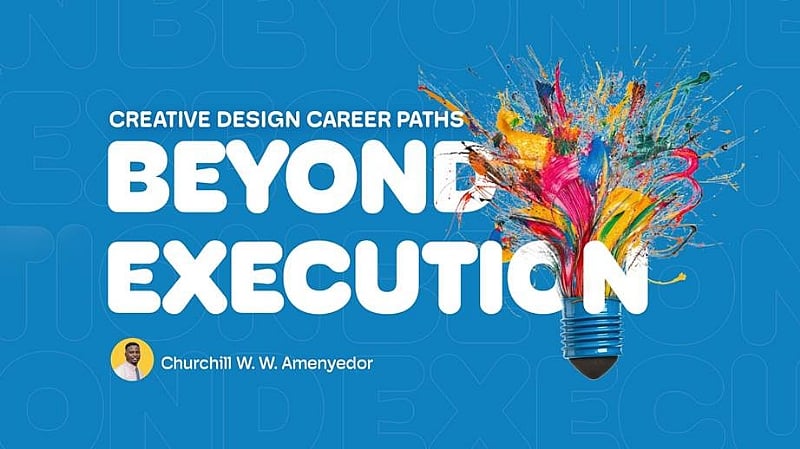The traditional perception of designers in Ghana and across Africa as mere executors of pre-determined ideas is outdated and detrimental to the growth of the design profession. This limited view restricts career progression, often forcing designers into a binary choice: remain stagnant in execution-focused roles or reluctantly transition into leadership positions that might not align with their skills or passions. This paradigm shift necessitates a re-evaluation of success within the design field, moving beyond the singular focus on leadership as the ultimate achievement. Instead, a more nuanced approach recognizes the diverse talents and aspirations within the design community, fostering an environment where specialization and strategic thinking are equally valued.
The conventional notion of leadership as the pinnacle of career advancement overlooks the reality that leadership is not a universal aspiration. While some designers thrive in managerial roles, leveraging their skills to guide teams and develop strategies, others find fulfillment in honing their craft and becoming subject matter experts. The ability to lead effectively requires a distinct skillset – one focused on management, strategic planning, and stakeholder engagement – which differs significantly from the creative expertise required to produce compelling visuals and user experiences. Forcing designers into leadership positions simply because it’s perceived as the next logical step can stifle their creativity and ultimately hinder their contributions. A more effective approach embraces a multi-faceted career model, offering opportunities for specialization alongside leadership tracks. This allows designers to progress within their chosen areas of expertise, contributing meaningfully without feeling pressured to abandon their core strengths.
A persistent misconception within the design field equates a lack of strong writing skills with a lack of potential for career advancement. While effective communication is undoubtedly crucial, written proficiency should not be the sole criterion for evaluating a designer’s capabilities. Designers communicate primarily through visuals, layouts, and user experiences, effectively telling stories and conveying complex ideas through non-verbal means. These forms of communication are equally powerful and should be recognized as such. While encouraging designers to articulate their ideas through various channels, including presentations and discussions, is beneficial, it’s equally important to avoid undervaluing those who may not conform to traditional corporate communication standards. The focus should be on fostering a diverse range of communication skills, recognizing the unique strengths and perspectives that each designer brings to the table.
The rapidly evolving creative industry in Africa demands clearly defined career progression models for designers. Currently, many designers, particularly those starting as freelancers or in agencies, face a lack of clarity regarding long-term career prospects beyond execution. This necessitates a concerted effort from organizations and industry leaders to establish structured career paths that cater to diverse aspirations. These paths should include: specialization tracks allowing designers to become recognized experts in niche areas like branding, UI/UX, or animation; strategic design paths for those inclined towards problem-solving and business impact, leading to roles like Design Strategist or Creative Director; entrepreneurial paths for designers seeking to establish their own agencies or design-driven businesses; and education and advocacy paths for those passionate about mentoring and shaping the next generation of African creatives. This multi-pronged approach will empower designers to chart their own career trajectories, fostering a more dynamic and vibrant design landscape.
Moving beyond the “execution-only” mindset requires a conscious shift in perspective from both designers and organizations. Designers must actively engage in strategic conversations, demonstrating their problem-solving abilities and the tangible impact of their work on brand growth and customer engagement. This includes proactively seeking opportunities to contribute to business discussions, proposing solutions that go beyond aesthetics, and effectively communicating the value they bring to the table. Organizations, in turn, must recognize designers as integral partners in the strategic process, fostering a collaborative environment where their expertise is valued and integrated into decision-making. This mutual recognition of designers as strategic thinkers, not merely executors, is crucial for unlocking the full potential of the design profession.
The future of design in Africa hinges on fostering a culture of choice and recognizing the equal importance of specialization and strategic leadership. Designers should be empowered to chart their own career paths, free from external pressures to conform to a single trajectory. Some will thrive in leadership positions, guiding teams and shaping business strategies, while others will excel in deep craft mastery, pushing the boundaries of creativity within their chosen specializations. This emphasis on choice, coupled with the development of clear career paths and a shift in mindset, will create a more inclusive and dynamic design ecosystem, enabling African designers to not only execute ideas but to lead, innovate, and shape the future of industries. The African design landscape is ripe with talent, and by fostering a more supportive and strategic environment, we can unlock its full potential.














